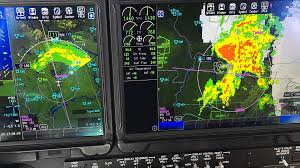
Introduction
Weather radar technology plays a pivotal role in meteorology, providing crucial data necessary for accurate weather forecasting and natural disaster preparedness. With climate change leading to unpredictable weather patterns, the ability to monitor and predict severe conditions such as storms, heavy rainfall, and tornadoes becomes increasingly vital. This article examines the functionality and relevance of weather radar in today’s climate.
What is Weather Radar?
Weather radar systems emit microwaves that bounce off precipitation particles in the atmosphere. The time it takes for the signal to return allows meteorologists to determine the distance of rain or snow and estimate its intensity. This technology can detect not only precipitation but also wind patterns and storms, enabling real-time monitoring of weather conditions.
Recent Developments in Weather Radar
In recent years, weather radar technology has evolved significantly. For instance, Doppler radar systems have enhanced our understanding of storm dynamics. These advancements allow for better detection of tornadoes and other hazardous weather conditions. In Canada, Environment and Climate Change Canada (ECCC) operates a nationwide network of radar systems that have been upgraded to offer higher resolution imagery and improved functionality, offering invaluable data for forecasters.
Importance of Weather Radar in Natural Disasters
Accurate weather radar data is essential during natural disasters. For example, the 2020 Atlantic hurricane season highlighted the importance of timely updates for communities at risk from hurricanes and tropical storms. With advanced radar technology, meteorologists were able to provide warnings that saved lives. The radar’s ability to track the path and strength of storms in real-time helped emergency services prepare effectively and communicate risks to the public.
Conclusion
The significance of weather radar technology cannot be overstated. As climate patterns continue to shift, the need for precise and timely weather forecasts becomes critical. With ongoing improvements in radar systems and technology, meteorologists are better equipped to warn the public about severe weather conditions, ultimately reducing the impact on lives and properties. Continued investment in weather radar technology is essential for adapting to our rapidly changing climate and safeguarding communities across Canada.



